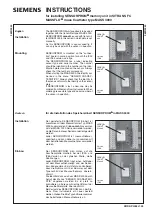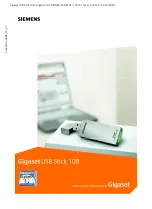
Automatic data recovery (rebuild)
When you replace a disk drive in an array, the controller uses the fault-tolerance information on
the remaining drives in the array to reconstruct the missing data (the data that was originally on
the replaced drive) and write it to the replacement drive. This process is called automatic data
recovery, or rebuild. If fault tolerance is compromised, this data cannot be reconstructed and is
likely to be permanently lost.
Time required for a rebuild
The time required for a rebuild varies considerably, depending on several factors:
•
The priority that the rebuild is given over normal I/O operations
•
The amount of I/O activity during the rebuild operation
•
The rotational speed of the disk drives
•
The availability of drive cache
•
The model and age of the drives
•
The amount of unused capacity on the drives
•
The number of drives in the array (for RAID5 and RAID6 )
Allow approximately 5 minutes per gigabyte without any I/O activity during the rebuild process.
This figure is conservative, and newer drive models usually require less time to rebuild.
System performance is affected during the rebuild, and the system is unprotected against further
drive failure until the rebuild has finished. Therefore, replace drives during periods of low activity
when possible.
CAUTION:
If the Online LED of the replacement drive stops blinking and the amber fault LED
glows, or if other drive LEDs in the array go out, the replacement drive has failed and is producing
unrecoverable disk errors. Remove and replace the failed replacement drive.
When automatic data recovery has finished, the online LED of the replacement drive stops blinking
and begins to glow steadily.
Failure of another drive during rebuild
If a non-correctable read error occurs on another physical drive in the array during the rebuild
process, the Online LED of the replacement drive stops blinking and the rebuild abnormally
terminates. If this situation occurs, restart the server. The system might temporarily become
operational long enough to allow recovery of unsaved data. In any case, locate the faulty drive,
replace it, and restore data from backup.
Handling disk drive failures
If the controller was configured with hardware fault tolerance, complete the following steps after
a disk drive failure:
1.
Determine which physical drive failed. On hot-plug drives, an amber drive failure LED
illuminates.
2.
If the unit containing the failed drive does not support hot-plug drives, perform a normal
shutdown.
3.
Remove the failed drive and replace it with a drive that is of the same capacity. For hot-plug
drives, after you secure the drive in the bay, the LEDs on the drive each flash once in an
alternating pattern to indicate a successful connection. The online LED flashes, indicating that
the controller recognized the drive replacement and began the recovery process.
4.
Power up the server, if applicable.
Automatic data recovery (rebuild)
155
Summary of Contents for EVA P6000
Page 187: ...German laser notice Italian laser notice Japanese laser notice Laser compliance notices 187 ...
Page 193: ...German battery notice Italian battery notice Battery replacement notices 193 ...
Page 194: ...Japanese battery notice Spanish battery notice 194 Regulatory compliance notices ...
















































